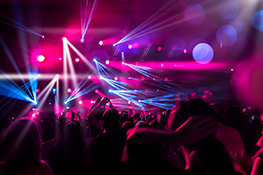Stage Lighting Setup Checklist: Ensuring a Smooth and Efficient Production
Planning & Design
Before a single cable is connected, meticulous planning is paramount. This phase lays the groundwork for a seamless production. Begin by thoroughly reviewing the script or performance outline. Identify key scenes, mood changes, and specific lighting requirements. This detailed analysis dictates the type and number of fixtures needed. Consider factors like color temperature, intensity, and beam angle for each scene. Creating a lighting plot, either digitally or on paper, is invaluable. This visual representation maps fixture placement, color schemes, and cue sequences, offering a blueprint for the setup process.
Next, assess the venue’s characteristics. Consider the size of the stage, ceiling height, power availability, and any existing rigging systems. Understanding these limitations helps you choose suitable fixtures and avoid potential problems during setup. Confirming power requirements for all equipment is crucial; insufficient power can halt the entire production. Remember to account for any potential power surges and implement safety measures.
Equipment Gathering & Testing
Having a comprehensive equipment list is crucial for preventing delays. Gather all necessary lighting instruments, including spotlights, wash lights, and followspots. This also includes cables, power distribution units, dimmers, control consoles, and any specialized accessories such as gobos or filters. Conduct a thorough inspection of each item before setup, ensuring functionality and identifying any potential issues beforehand.
A pre-production test run is essential. Set up a small-scale version of your lighting design in a controlled environment. This allows you to troubleshoot any technical glitches, fine-tune your programming, and familiarize yourself with the equipment. Testing prevents unexpected issues during the actual production, saving valuable time and reducing stress.
Rigging & Placement
Safe and secure rigging is non-negotiable. If using a truss system, ensure it’s correctly assembled and adequately supported. All fixtures should be securely fastened, and safety cables should be utilized whenever possible. Proper weight distribution across the truss is critical to prevent accidents. Adhere strictly to weight limits and consult a rigger if you lack experience with heavy equipment.
Precise fixture placement is crucial for achieving the desired lighting effects. Use the lighting plot as a guide, ensuring that each fixture is positioned correctly to illuminate the stage effectively. Consider spill light and potential glare. Pay close attention to focusing each fixture to achieve the sharpest and most accurate beam.
Wiring & Connections
Careful wiring is critical for safety and functionality. Use appropriately sized cables and ensure all connections are secure and properly grounded. Avoid overloading circuits, and clearly label all cables and connectors. This meticulous approach minimizes the risk of electrical hazards and simplifies troubleshooting. Employ color-coding systems for cables to streamline the setup process and avoid confusion.
Properly connect your dimmer packs and ensure sufficient capacity for all fixtures. Testing each circuit individually before powering up the entire system reduces the risk of damage. Use surge protectors and other safety devices to safeguard your equipment and the production.
Programming & Cueing
Programming involves creating sequences of lighting cues that will be used during the performance. This involves setting levels, colors, and other effects for each scene. The accuracy and precision of your programming directly impacts the overall success of the show. Thorough testing during the programming stage is key to finding errors early and fixing them before the actual performance.
Creating a well-organized cue sheet is paramount for smooth execution. The cue sheet should clearly list each cue, its timing, and specific settings. This document serves as a reference point for the lighting operator and ensures consistent execution of the lighting design.
Final Checks & Troubleshooting
Before the performance begins, conduct a final walk-through. Check all connections, fixtures, and dimmer levels. Ensure the control console is functioning correctly and that all cues are accessible and execute as planned. Have a contingency plan in place for any potential technical issues.
Having a designated troubleshooting team is essential. This team should be familiar with the equipment and capable of resolving minor issues quickly and efficiently, minimizing disruption to the performance.
Post-Production
After the production, carefully dismantle and store all equipment. Properly clean and maintain the lighting instruments to ensure their longevity. Document any issues or needed repairs. This meticulous post-production approach will save time and resources in future productions.
By following this comprehensive checklist, you can significantly streamline your stage lighting setup, ensuring a smooth, efficient, and safe production. Remember, proper planning and attention to detail are the cornerstones of successful stage lighting.


 Auditorium Construction Services
Auditorium Construction Services 